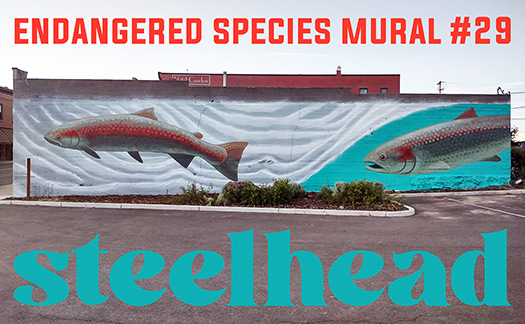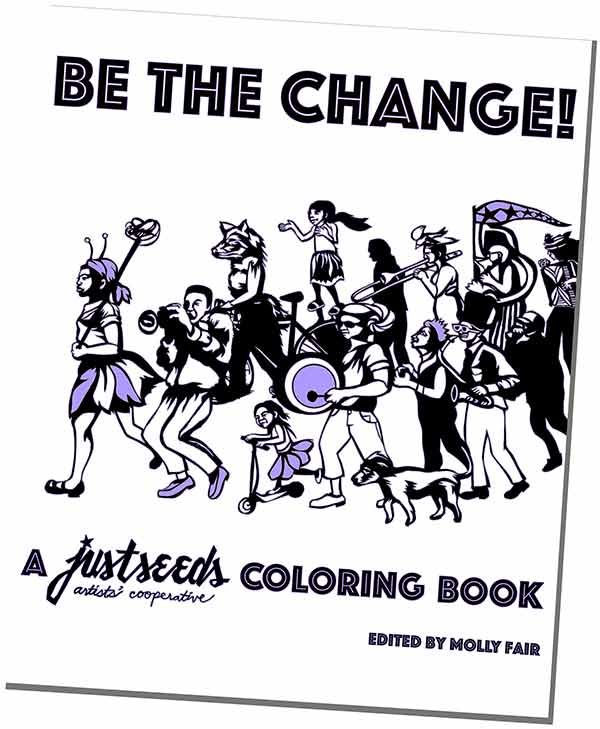It’s week three of my arts residency in the high Cascade mountains of central Oregon. I’m at the Caldera Arts Center, in the burnt pine woods uphill from the town of Sisters, and I’m getting a lot done. One reason for this is the studio that I have available for use while I’m here. It’s huge.

I’m working on several projects at the same time, but today I’m going to do a short process post about just one of them.
In March the members of Justseeds will be at the Southern Graphics Conference in Milwaukee, doing a bunch of live printing and giving some talks about the stuff we do. The theme for the art we’re going to make while there is “Labor”. Since my art usually has an ecological thrust to it, I tried to figure out how I might bend that theme to my interests. I reasoned that if there’s any labor that’s undervalued, it’s the labor of the small beasts that keep our world running. Ants perhaps, or bacteria. Or maybe bees. I’d been wanting to make an image of bees for a while, and I recalled that I’d also wanted to try to make an image of a sunflower, tracing the Fibonacci spirals within the seed-head. I decided to combine the two.

First I had to figure out how to draw that spiral. It took some effort, and some math, and a lot of error and erasure before I figured it out, using some tutorials I found online. That’s the image at left. Then I laid a square of photoresistant rubylith film over that image and cut out a series curved diamond shapes according to the structure of the spiral. I realized that bees would be sucking nectar from the flowers of the Sunflower head, so I drew those around the outer rim of the spiral and cut them out. Sunflowers are members of the Compositae family, like daisies, so-called because of the composite nature of their flowers, which are formed from many small florets.

The next step was to draw a bee. I wondered what kind of bee to draw. Honeybee? Halictid bee? Some other sweat bee? I settled on a sort of composite bumble/honeybee form, with big pollen packets on the legs.
Next I had to incorporate the bee into the spiral. I realized that I needed two bees, so I traced the first and cut out its rough outline. I taped these two images down under the spiral and cut out the shapes of the bees.

After that I put a big sheet of rubylith over the top of both the spiral and the bee drawings and cut out another portion of the spiral. I did this so that when the ink layers print on top of one another three colors will arise, out of two. I used this sheet of rubylith to outline the sunflower’s petals.

Lastly I inked in the bees, using a brush pen and rapidograph ink. Lots of small lines.I inked the images on a sheet of architectural vellum, which is a translucent cotton paper that can be used as a silkscreen film without being oiled. I recently discovered this stuff and I love it- it means that I never have to put drawings into the computer in order to get them black enough to expose a screen! The last image is a bit muddy, but I promise the poster will look clear as day when it get printed!
The final touch was adding the text, also cut out of rubylith. I went for a classic labor slogan- Labor Creates All Wealth. Without the labor of bees, what would we have? Not much. We ignore them at our peril.
Here’s a toast to all pollinators, who do their work for their own reasons, and at their own pace. All the work we feel so proud of is pretty much nothing compared to the real work that makes the world go around.








I really enjoyed this post Roger. Nice score on the studio also. Looking forward to seeing this printed in Milwaukee!
what a fascinating project!
rog, your work is becoming so sophisticated, rich and clever, thanks for explaining the complicated processes you have to use. quite brilliant and lovely
Is this still for sale?
Alas no, it’s out of print. I might have a few copies left in the flatfile- send me an email at toosphexy@gmail.com.